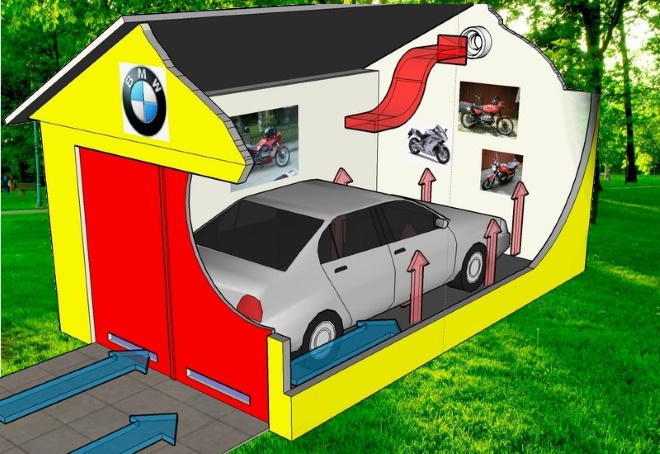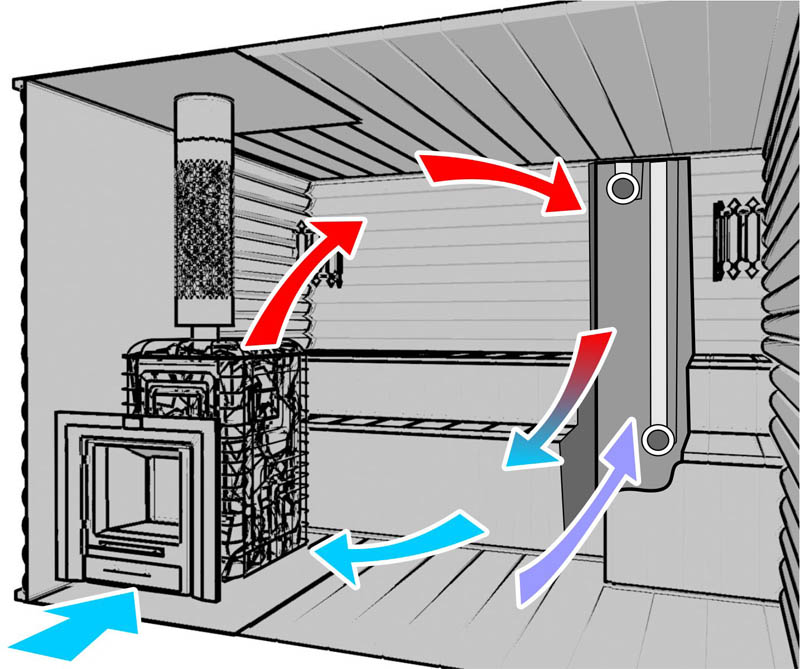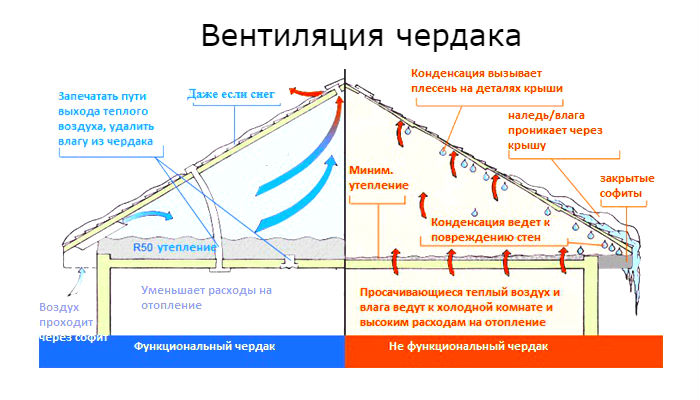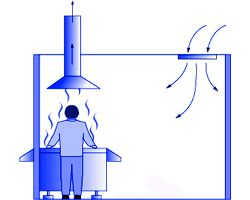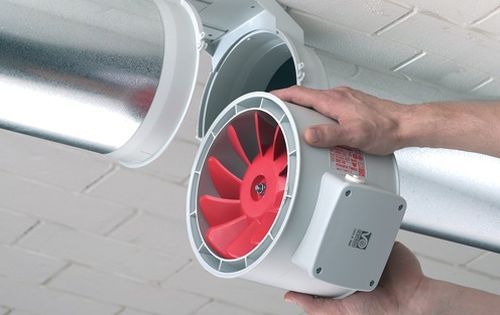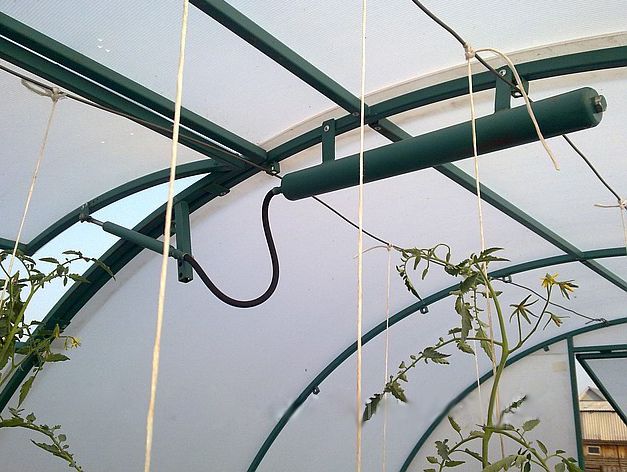The hood in the bath is necessary and everyone understands this. At the same time, various criteria of necessity are assessed, among which there may be both dampness and stuffiness and even carbon monoxide. Later we will briefly go through all the consequences of insufficient ventilation, but now we note that literally everyone can do high-quality ventilation in the bath with their own hands. The specific design will depend on the type of steam room, oven, and the location of the heating zones. But in general, the bath ventilation system is not difficult.
What does the lack of ventilation in the bath lead to?
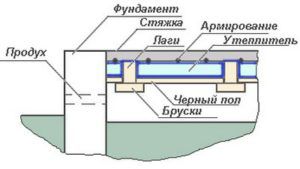
Whatever structure we are talking about, the first thing that the absence of a hood guarantees is a decrease in service life. Buildings as a whole, if a wooden frame is considered. And finishing in the steam room or bath in general, if it is made as a reinforced concrete structure with wooden walls inside. In addition, a missing or poorly functioning hood made in a steam room can cause the following troubles:
- poisoning of vacationers with products of their own breath;
- damage to the lungs with carbon monoxide, if it is released due to insufficient supply of fresh air to the stove;
- lack of comfort, since temperature and humidity rise extremely quickly in the steam room.
In addition, the hood must be made with high quality to ensure that the benches, flooring, and wall coverings dry out after rest. This will ensure the absence of mold, fungal infections, which will not only extend the life of the tree, but also will not worsen the health of those who are resting in the bath.
Mold and fungal cultures are the most dangerous things that can occur in a bath. Inhalation of spores is extremely negative for health. Therefore, if the bathhouse is a log house with a wooden floor, the hood should be extremely effective. In addition, even during the construction of the structure, ventilation of the floor should be provided.
What are the requirements for a hood in a bath?
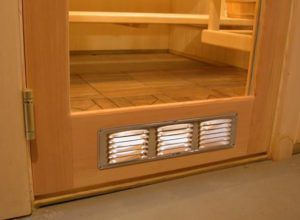
Although it is relatively easy to make a cooker hood in a steam room with your own hands, you need to ensure that the following situations do not arise:
- the flow of incoming cold air into the steam room directly falls on the guests;
- there are clearly defined low temperature streams;
- the hood works in such a way that part of the room is much hotter than the rest of the area.
- To avoid such troubles, just when designing a cooker hood in a bath with your own hands, you should adhere to the following rules:
- air intake ducts are located in the floor area;
- if possible, preliminary heating of the incoming flow should be carried out, for which it is better to place the intake channels near the furnace or other used heating devices. This will not only provide heating, but also ensure that sufficient oxygen is supplied to the stove if an open fire is used;
- exhaust ducts should be adjustable so as not to allow a situation when the exhaust, made in the steam room, cools the room extremely quickly.
When planning supply and exhaust ventilation in a steam room and a bath, it is necessary either to be able to change the intensity of heat exchange, or to change the air in the steam room 2-3 times per hour.
An ideal, always existing channel for exhausting air in a bath with a stove is its firebox. Therefore, it is important to supply enough fresh air to the combustion zone.The heated gas rises through the exhaust pipe and is thrown out. If the draft is strong enough, you can place ventilation grilles at the bottom of the entrance door in the steam room. This is the simplest do-it-yourself hood.
Air movement patterns
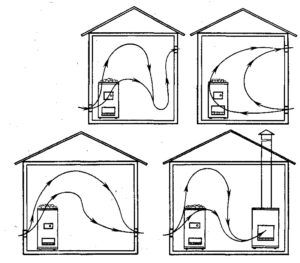
Below is a diagram by which air moves in the bath when it enters from the outside and exits through the exhaust ducts or openings.
The figures show that the principles outlined earlier have been observed:
- incoming low temperature air enters from below or is preheated, passing near heat sources;
- the furnace of the stove and its exhaust pipe can be an excellent outlet.
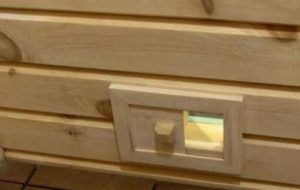
In practice, when the exhaust system in the steam room is created by hand, the diagram shown in the upper right corner of the figure is tried on. This type of ventilation has a number of advantages:
- exhaust openings or ducts can be equipped with mechanical blowers allowing flow regulation;
- the inlet channels do not require the installation of pressure equipment, in this case the cold air flow will be smooth, and the amount of cold can be easily controlled by a simple damper.
Among other things, the air passage line is smooth, as well as its heating. The steam room creates a good atmosphere with a constant temperature throughout the entire volume. It is advisable to place the inlet channels for the intake of cold air under the benches in order to ensure that the bodies of the rest are not rapidly cooled.
What mechanical means can be used
When a hood is being built in a bath or steam room, you can get by with simple dampers and grilles to regulate the air flow. However, the use of mechanical and electrical devices is not as difficult and costly as it seems. When building a ventilation system with your own hands, you can apply:
- exhaust air diffusers, which ideally perform their functions both with natural circulation of air masses and with the use of fans;
- Simple electric fans, insulated from moisture, show excellent results. There are few such devices needed, ideally at two points located in the upper corners of the wall;
- if you want to save money, you can place simple fans without moisture protection outside the steam room, where they will work in normal humidity conditions. To collect condensate from the air coming from the steam room, nets are used, which are rolled up inside the ventilation pipe. In order for the resulting water to be removed, a vertical section of the channel with an open bottom is usually made;
- the electronic temperature control circuit is very simple and does not differ in high cost. Its task is to work in two modes, ensuring the inclusion and continuous operation of the exhaust fans, as well as their switching on when the specified temperature level is exceeded and off when it falls.
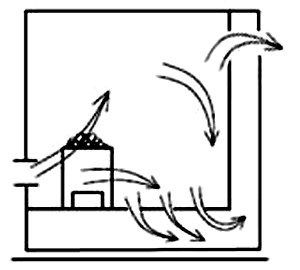
As a result of simple work, you can make a high-class bathhouse, where all modes are literally set by one adjusting knob on the wall.
Anemostats can be successfully used to form a two-point exhaust duct that simultaneously captures moist air close to the floor surface (or from under the grating) and in the ceiling area, where the air is overheated and saturated with carbon dioxide. The diagram below shows how a well-ventilated bath is arranged, which can be quickly dried and at the same time, by adjusting the diffusers, to achieve the desired balance between air flows at floor level and close to the ceiling.
Conclusion
In conclusion, it should be noted that the best performance has a cooker hood in a bath, built with your own hands and working on the principle of natural circulation. It can be easily adjusted with simple dampers and does not require maintenance or electricity.However, more comfort can be achieved by using simple electrical devices.
To guarantee the safety of vacationers, to eliminate the very possibility of electric shock, you need to use devices designed for power supply of 12 or 36 volts. And then you can make a cooker hood in the sauna with your own hands, which will provide maximum comfort and the best convenience for adjusting the temperature inside the steam room.

